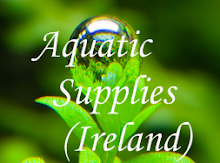Algae Alert
So you got the algae bug and you want to know why? What to do? And how to get rid of it? I will try and answer the above in one simple answer! So now you think that all you have to do is add nutrients and fertilizers and all will be fine. Well it’s not quite that simple.What you have to do is get the right nutrients and or fertilizers, and the correct amount (balance) in the tank or you end up with what you don’t want. ALGAE all over your tank. At the end of the day algae is a plant, and you have the conditions in your tank for growing plants so in stands to reason that algae is going to grow if the conditions are right just as much as any other plant in your tank.When people get algae in the tank they tend to panic and start throwing in all sorts of anti algae drops and anything else they think will kill it, just as I did when I first got my first bloom. Unfortunately it doesn’t work that way nor is it that easy.Plants and algae need 4 basic things to live and survive correctly. Light, nitrogen, phosphate and potassium. Both plants and algae fight to the end to compete for the best of everything in the tank.You have enough light because you may, as I have done have just put in the extra tube, the fish are throwing out all sorts of nitrogen and probably phosphate as well in their waste and the only thing that is not in any large amounts is potassium, one of the most over looked additions. There is no evidence that I have found that potassium invites or encourages algae in any tank.But again if you do as I did and remove all the phosphates from the water then the plants will not flourish and will be weak and leave them then being unable to take up other vital nutrients that they need to survive, (without going into to much detail) plants need a good supply of all nutrients to be able to take onboard other nutrients. Which for example can lead to high nitrate levels if the plants don’t consume enough nitrAte, this is then left in the water. Again with out going into great detail there is what is considered to be main elements that plants need to survive well, these are broken down into 2 groups:
Some of these I have only read about, some I do know about and some that I have first hand experience of, but as with everything, we are learning all the time.Higher plants consume the nutrients faster and easier than the lower ground plants thus leaving very little for the algae to feed on. That doesn’t mean though you will not get algae, you will because it came in when you started putting plants in the tank and they were not quick enough to get to the nutrients before the algae did.The fewer the plants you have the more likely algae will appear as the plants don’t use up all the nutrients so leaving more for the algae to amass itself.IMO it would probably be easier to rid algae in a fish only tank, for as I was going to attempt a black out period to rid the algae I decided against it, as for the plants need light to thrive, so I still don’t know if a black out of a planted tank works or not. I must admit I have probably learnt more about algae in my time of fish keeping than I have about fish keeping its self. The latest bloom happened when I tried to put in a new laterite under the gravel, I messed it up and ended up with what you see in the other pictures because of the excess iron in the water instead of under the gravel to feed the roots. Although there are different forms of algae, excess iron is the most common cause of hair algae, which is like threads of very fine green hair growing over the tank which I found to be more prominent in the upper half of the tank and around the filter top where the water outlet is, as this is where algae can also consume vast amounts of oxygen. It has been stated in another article on a different site that iron is easy to get rid of with water changes, and I do agree to a certain level, but when you do what I did it is NOT that easy.Although I am trying to explain about the nutrients plants need, I have to add that other elements the likes of cleanliness of water, regular water changes (of which too many over a short time can be just as bad as no water changes) all play a part in keeping ALGAE away.So over all, the key to a clean near algae free tank has a lot to do with BALANCE. I am not going to say there are many ways to rid algae but more reduce it and stunt its growth, as I have tried to explain it is all about NUTRIENT CONTROL, but there are dips and chemicals available to aid this should you need, or should I say WHEN you need. |
